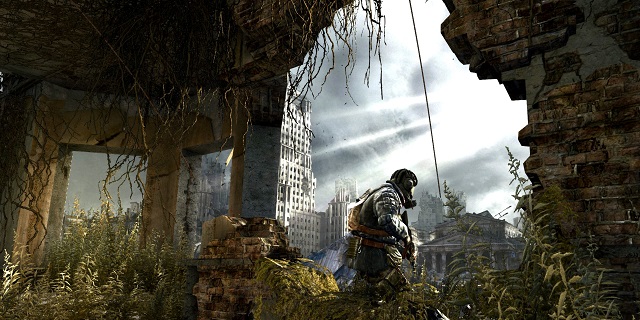
In today’s world of action-heavy, military-based first-person shooters, it can be hard to find a game that appeals to an audience looking for something a little different from the norm. Shooters are everywhere these days, but not many of them attempt things that would feel out of place in a Call of Duty or Battlefield game. Thankfully, Ukraine-based developer 4A Games knows just the solution. Metro: Last Light, the sequel to cult hit Metro 2033, is here, with promises to improve upon the central mechanics while maintaining what made the original so memorable.
Like 2033, Metro: Last Light takes place in Russia after the fallout of a nuclear catastrophe. It follows groups of survivors living in the many metro stations in and around Russia, with different factions forming and civil wars brewing in order to protect specific territories. Not only that, but foul creatures have emerged from the radiation, giving the remaining humans another enemy to worry about during the many conflicts in this post-apocalyptic world. The story never dives into the specific events which lead to nuclear attacks, and that’s a good thing; it allows the game to tell a personal story, as well as one of survival. It focuses less on the past and more on the present.
Following the events of Metro 2033, Last Light continues the adventure of our Russian hero, Artyom, after launching a nuke that destroyed the largest nest of mysterious Dark Ones in all of Russia. Artyom soon learns that one of the creatures survives, and on a journey to reach it, he encounters new plots from his enemies to take over the metros and spark a new, potentially more dangerous war. The story is fantastic, diving into the many facets of what makes humans tick, especially when they are willing to do anything it takes to survive. Arytom, despite being a silent protagonist, has monologues before the start of each mission that give a sense of who he is and what he fights for, without beating the player over the head with the information.
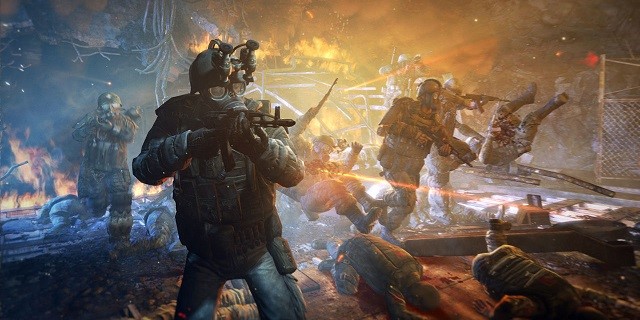
Like in 2033, Last Light’s greatest strength is its atmosphere. Despite being full of death, Metro: Last Light is also brimming with life. Every new area you come across is full of vivid details you will have a hard time forgetting, including conversations between NPCs about living conditions, their decisions in life and what is lurking just outside of their home. Some people live normal lives, as if nothing has changed, but others find the adjustment more difficult. Even after the first game, many of these small moments are as poignant as ever.
Many games play with background storytelling, but Last Light is all about it, giving you as much information as you are willing to discover. You can run straight through each area, but doing so would void some of the best moments the game has to offer. It can be easy to miss the small conversations and other seemingly-minute details that saturate the world, but if you take the time and pay attention, you’ll find yourself absorbed in the experience.
The choice system has returned, and it is as cryptic as ever. You never make any direct choices, but your actions throughout the world have the ability to change it, even in the smallest of ways. While Artyom is merely a man on a mission, his interactions (or lack thereof) within the world will shape the story and ultimately determine the ending of his adventure. Some of these choices are more obvious than others, and yet they never feel obvious. To avoid ruining some brilliant moments, I won’t get into specifics, but you will be surprised how the smallest actions you take throughout your experience will register as something positive in this otherwise-bleak world.
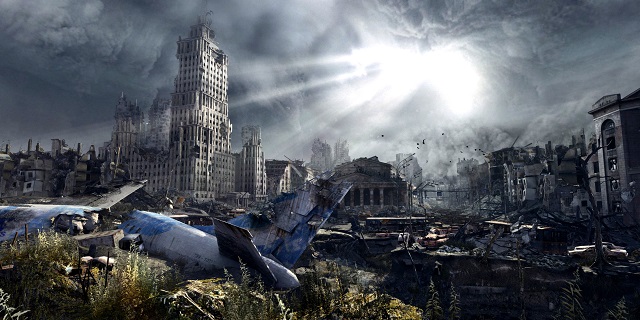
Metro 2033’s biggest problem was how it handled the gunplay. It wasn’t terrible, but it certainly felt lacking in comparison to other shooters on the market. Last Light does not have this problem, thankfully, with the shooting mechanics never feeling anything less than sublime during your many combat encounters. Your weapons all have the necessary punch, while still feeling distinct. And the ways in which you can customize them by cobbling together scopes or silencers at weapon stores help bring the game into the modern era of shooters, without becoming just another game with guns.
Many of your fights will be against the variety of creatures that take residence in the abandoned tunnels of the metros, but you will also come in contact with large groups of humans. The game does emphasize taking the stealth approach with these situations; this gives you plenty of opportunities to turn off (or shoot) lights and knock out enemies from behind to continue. If you need to get rid of them from afar, you have throwing knives available to you, which are limited in number but can kill an enemy with a single hit.
The most helpful part is a small blue light on your wristwatch, which will glow when you are visible, but remain off when you cannot be seen. And thanks to a musical sting, you will know when you wander into the light in an area full of enemies, giving you a brief chance to back away before they see you. Stealth isn’t the only approach to these scenarios, but with limited resources at your disposal, it might be the best approach. The AI is also improved from the last game, giving you a great challenge when approaching certain situations without being too unforgiving.
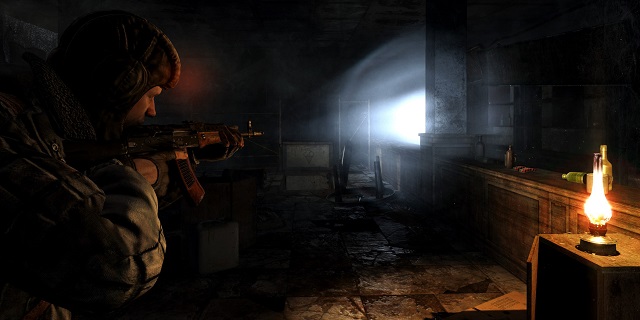
During expeditions to the irradiated surface, you need to equip your gas mask in order to survive. You have limited air to breathe in the mask, and you can see how much time is left thanks to your always handy wristwatch, allowing you to replace the filter when needed. The mask can be damaged in combat, however, which will make it harder to see through and make the filters less effective than usual. Small things, such as the ability to wipe off your mask if it’s foggy (or covered in blood), are smart additions that aren’t completely necessary, but do help with immersion.
There are other tiny mechanics which also help with the game’s atmospheric nature. For example, in order to see your current objectives, you must physically hold up a notepad in the game, and if you can’t see it, you can pull out your lighter and hold it up to the pad. You also have a flashlight, which you need to manually recharge when the battery is low. These may seem non-essential or rather silly, yet they do so much to bring you into the world and helped me appreciate just how much attention to detail there is. It all begins to make sense once you start to play it.
None of this would be effective without a strong presentation, and Metro: Last Light has a remarkable one. It’s visually stunning, even on consoles, presenting the world in vivid detail. The musical score, with songs from the previous game plus many new tracks, blends in and adds an extra layer to the presentation without becoming overbearing. The English voice acting is fine, but it’s lacking at times; you can, however, use the Russian voice track for a more authentic experience if you so choose.
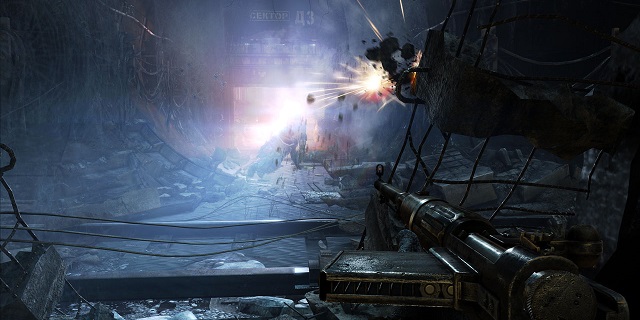
While some shooters deliver on providing you with excellent mechanics or an addictive multiplayer component above all else, Metro: Last Light is going in the opposite direction. The shooting itself is a blast and there are a handful of exciting moments that rival some of today’s biggest blockbuster games, but it’s deliberately paced and focused on delivering a game full of details with a story worth telling. It’s not a game for everyone, but those willing to get lost in Last Light’s remarkable world won’t regret it.
Pros: Brilliant world with a plenty of atmospheric moments, excellent presentation, gunplay is greatly improved
Cons: Slow pace may not be for everyone



















